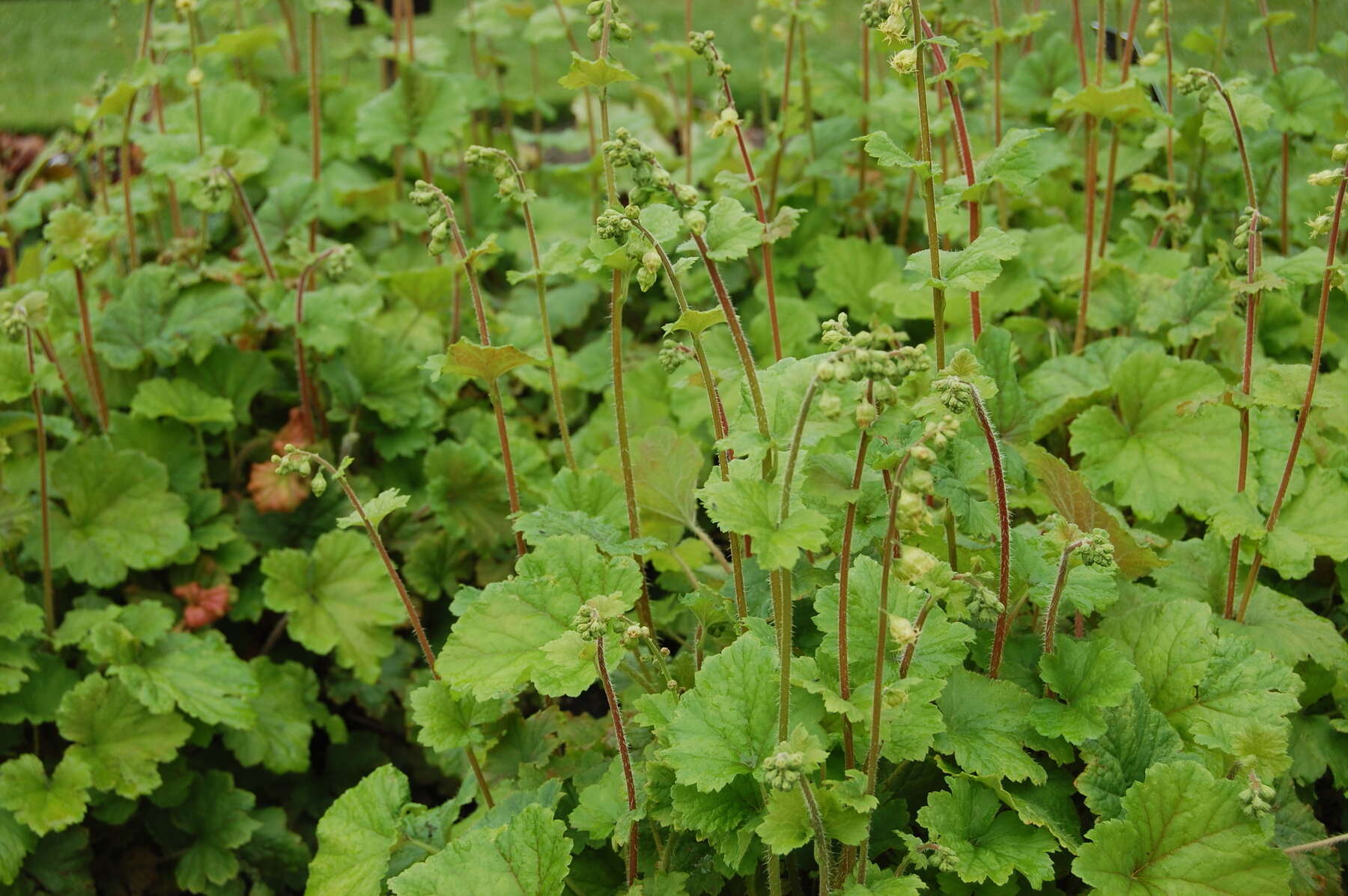
Tellima is a fascinating plant that often goes unnoticed in the wild. Known for its delicate, fringed flowers and heart-shaped leaves, this perennial herb can add a touch of elegance to any garden. But what makes Tellima truly special? Tellima thrives in shady, moist environments, making it perfect for woodland gardens. Its flowers, which bloom in late spring, attract a variety of pollinators, including bees and butterflies. This plant is not just a pretty face; it also has a rich history in traditional medicine. Native Americans used it to treat various ailments, from sore throats to digestive issues. Whether you're a gardening enthusiast or just curious about unique plants, Tellima offers a blend of beauty and utility that's hard to beat. Ready to learn more? Let's dive into 34 intriguing facts about this remarkable plant!
What is Tellima?
Tellima, also known as fringecup, is a perennial plant native to North America. It belongs to the Saxifragaceae family and is often found in moist, shady environments. Let's dive into some fascinating facts about this unique plant.
- Scientific Name: Tellima grandiflora is the scientific name for fringecup.
- Common Names: Besides fringecup, it's also called false alumroot.
- Native Range: This plant is native to the western regions of North America, particularly from Alaska to California.
- Habitat: Prefers moist, shady areas like forest understories and stream banks.
- Height: Typically grows between 1 to 2 feet tall.
- Leaves: The leaves are heart-shaped with scalloped edges, adding to its ornamental appeal.
- Flowers: Produces small, bell-shaped flowers that are usually greenish-white or pink.
- Blooming Season: Blooms from late spring to early summer.
- Pollinators: Attracts bees, butterflies, and other pollinators.
- Seed Dispersal: Seeds are dispersed by wind, aiding in its spread.
Unique Characteristics of Tellima
Tellima has some unique features that make it stand out in the plant world. These characteristics not only add to its beauty but also its ecological importance.
- Fringed Petals: The petals have fringed edges, giving the plant its common name, fringecup.
- Evergreen: In milder climates, the foliage remains evergreen throughout the year.
- Rhizomatous Growth: Spreads through rhizomes, forming dense clumps over time.
- Shade Tolerance: Highly tolerant of shade, making it ideal for woodland gardens.
- Deer Resistance: Generally resistant to deer, which makes it a good choice for gardens in deer-prone areas.
- Ground Cover: Often used as ground cover due to its spreading habit.
- Low Maintenance: Requires minimal care once established.
- Soil Preference: Thrives in well-drained, humus-rich soil.
- Drought Tolerance: Moderately drought-tolerant once established.
- Companion Plants: Pairs well with ferns, hostas, and other shade-loving plants.
Ecological Importance of Tellima
Tellima plays a significant role in its native ecosystems. Its presence benefits various forms of wildlife and contributes to the health of the environment.
- Erosion Control: Helps prevent soil erosion with its dense root system.
- Habitat: Provides habitat for small insects and animals.
- Nutrient Cycling: Contributes to nutrient cycling in forest ecosystems.
- Biodiversity: Supports biodiversity by providing food and shelter for various species.
- Indicator Species: Acts as an indicator species for healthy, moist forest environments.
- Carbon Sequestration: Helps in carbon sequestration, aiding in climate regulation.
- Microclimate Regulation: Contributes to the regulation of microclimates in forest understories.
- Pest Control: Attracts beneficial insects that help control pest populations.
- Pollinator Support: Provides nectar and pollen for pollinators, supporting their populations.
- Seed Bank: Contributes to the seed bank, ensuring the persistence of plant populations.
Cultural and Historical Significance of Tellima
Tellima has been used in various ways by indigenous peoples and has cultural significance in some regions.
- Medicinal Uses: Some Native American tribes used it for medicinal purposes, such as treating wounds and sores.
- Ornamental Use: Popular in ornamental gardening for its attractive foliage and flowers.
- Symbolism: In some cultures, it symbolizes resilience and adaptability.
- Traditional Knowledge: Indigenous knowledge about Tellima has been passed down through generations, highlighting its importance in traditional practices.
The Final Word on Tellima
Tellima, often overlooked, packs a punch in the plant world. This hardy perennial thrives in shady spots, making it a gardener's best friend for those tricky areas. Its delicate, fringed flowers add a touch of elegance to any garden, while its ability to attract pollinators like bees and butterflies boosts biodiversity.
Beyond its beauty, Tellima's resilience is impressive. It can withstand various soil types and conditions, proving it's not just a pretty face. Plus, it's low-maintenance, perfect for both novice and seasoned gardeners.
Incorporating Tellima into your garden isn't just about aesthetics. It's about fostering a healthy ecosystem. So, next time you're planning your garden, consider this versatile plant. It might just become your new favorite. Happy gardening!
Was this page helpful?
Our commitment to delivering trustworthy and engaging content is at the heart of what we do. Each fact on our site is contributed by real users like you, bringing a wealth of diverse insights and information. To ensure the highest standards of accuracy and reliability, our dedicated editors meticulously review each submission. This process guarantees that the facts we share are not only fascinating but also credible. Trust in our commitment to quality and authenticity as you explore and learn with us.
